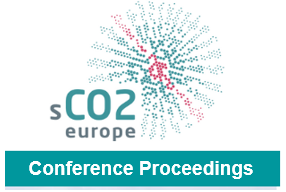Modeling and study of a printed circuit heat exchanger for Brayton power cycles using supercritical CO2 mixtures as working fluid
Brayton power cycle using supercritical carbon dioxide (s-CO2) as a working fluid is a high-efficiency trend technology that has been under study for improvement. As most of the heat transfer in these cycles occurs in the regenerator, printed circuit heat exchangers (PCHE) have proved to be a useful device solution for this application because of their high surface-area-to-volume ratio. Moreover, recent studies have corroborated the improvement in the efficiency of a supercritical Brayton cycle by mixing components that raise the critical point of s-CO2. This study focuses on the CFD modeling and analysis of a PCHE for fully turbulent conditions. The device's performance with straight channels regarding essential parameters such as heat recuperator conductance (UA), temperature, pressure drop, or turbulence is studied, as well as different configurations. A comparison between pure supercritical carbon dioxide and s-CO2 mixtures (s-CO2 /COS, s-CO2 /H2S, s-CO2 /NH3, and s-CO2 /SO2) is carried out.
Vorschau

Zitieren
Rechte
Nutzung und Vervielfältigung:
Dieses Werk kann unter einer Creative Commons Namensnennung 4.0 Lizenz (CC BY 4.0)
Creative Commons Namensnennung 4.0 Lizenz (CC BY 4.0)
genutzt werden.
